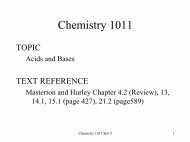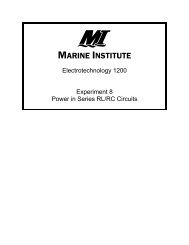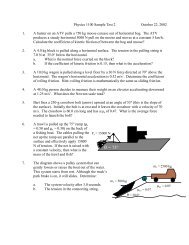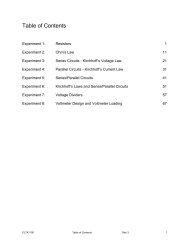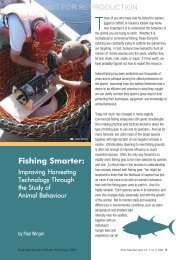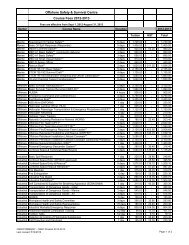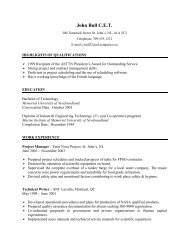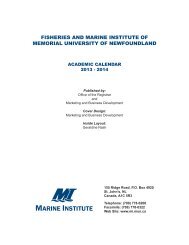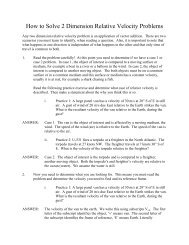Electrotechnology 1200 Experiment 10 Series RLC Circuits
Electrotechnology 1200 Experiment 10 Series RLC Circuits
Electrotechnology 1200 Experiment 10 Series RLC Circuits
You also want an ePaper? Increase the reach of your titles
YUMPU automatically turns print PDFs into web optimized ePapers that Google loves.
PROCEDURE A (Frequency Response of a <strong>Series</strong> <strong>RLC</strong>Circuit)A1. Measure the actual resistance of the 470Ω resistor and the dc resistance of the 25mH choke and calculate the total series resistance [<strong>10</strong>-1].A2. Connect the Isolated Function Generator circuit shown in Figure 2-1 (pg. 17) to thecircuit of Figure <strong>10</strong>-1. Prepare to measure V CD PP , V R PP , V L PP and V C PP (individually).Figure <strong>10</strong>-1A3. MODE to CH-A(CH1).A4. Turn the Function Generator ON and set V CD to 6V PP , <strong>10</strong>00Hz.A5. Measure V R PP , V L PP and V C PP [<strong>10</strong>-2] using CH-A.A6. Calculate the current I, the inductive reactance X L , the capacitive reactance X C andthe phase angle θ [<strong>10</strong>-2]. Indicate if θ is leading or lagging.Note: Use R T when you calculate the phase angle θ.A7. Complete Table <strong>10</strong>-2 for each frequency shown.A8. Turn the Function Generator OFF, but do not change the circuit. It will be used inProcedure B.ELTK<strong>1200</strong> <strong>Experiment</strong> <strong>10</strong> Rev 5 113



